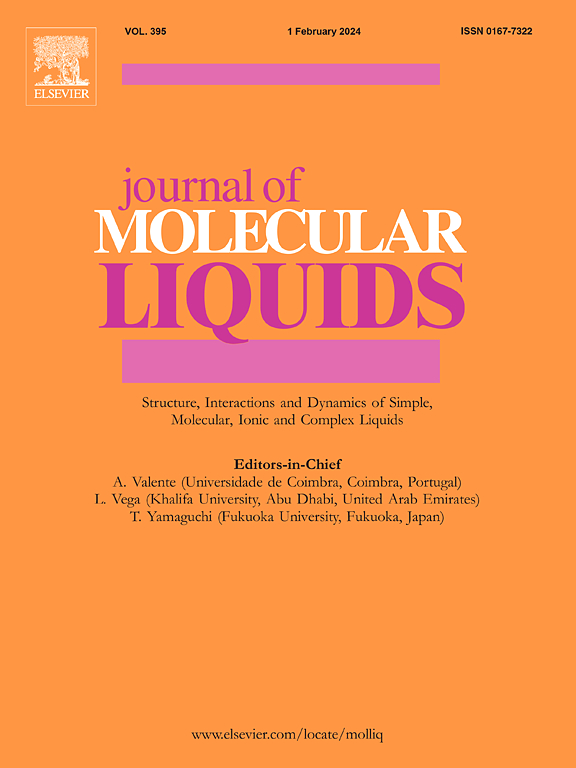表面改性二氧化硅纳米颗粒提高采收率的进展:合成、机制和实验见解
IF 5.3
2区 化学
Q2 CHEMISTRY, PHYSICAL
引用次数: 0
摘要
含纳米颗粒的含水纳米流体为提高原油采收率(EOR)提供了一种很有前途的方法。实验研究表明,采用合适的改性剂对纳米颗粒进行表面改性,可提高油藏条件下的采收率和稳定性。本文综述了表面改性二氧化硅纳米颗粒(SM Si-NPs)在提高采收率中的应用,重点介绍了其合成、表征、提高采收率机理和驱油试验。文献分析表明,表面改性主要通过降低界面张力、改变岩石润湿性、提高分离压力和改善流体流变性来提高提高采收率。与以往的综述不同,本文提供了详细的表面改性Si-NPs的组成和制备过程,综合稳定性数据表,以及针对每种提高采收率机理和驱油试验结果的不同表,特别关注了SM Si-NPs。这允许对SM Si-NPs进行更严格的比较评估。例如,与使用裸Si-NPs相比,使用enordet涂层的Si-NPs可以获得39%的回收率(RF),而使用磺酸聚合物修饰的Si-NPs可以使0.7 wt% Si-NPs的界面张力降低46%。虽然表面改性Si-NPs在提高采收率方面的表现通常优于裸纳米颗粒,但岩心注水和微观模型测试表明,它们有时会降低渗透率;例如,亲水表面修饰的Si-NPs可以使微模型渗透率降低72%。最后,本综述强调了表面改性Si-NPs在提高采收率中的有效性,并确定了优化的关键途径,以减轻副作用,进一步提高采收率。本文章由计算机程序翻译,如有差异,请以英文原文为准。
Advancements in enhanced oil recovery with surface-modified silica nanoparticles: synthesis, mechanisms, and experimental insights
Aqueous nanofluids containing nanoparticles offer a promising approach for enhanced oil recovery (EOR). Experimental studies show that surface modification of nanoparticles, with suitable agents improves both oil recovery efficiency and stability under reservoir conditions.
This review comprehensively examines surface-modified silica nanoparticles (SM Si-NPs) applications in EOR, focusing on synthesis, characterization, EOR mechanisms, and flood tests. Literature analysis reveals that surface modification primarily enhances EOR by reducing interfacial tension, altering rock wettability towards more water-wet conditions, enhancing disjoining pressure and improving fluid rheology. Unlike previous reviews, this paper provides a detailed composition and procedure for preparing surface-modified Si-NPs, a comprehensive stability data table, and distinct tables for each EOR mechanism and flood test results, specifically focusing on SM Si-NPs. This allows a more rigorous comparative evaluation of SM Si-NPs. For example, ENORDET-coated Si-NPs can achieve a 39 % recovery factor (RF) compared to 32 % RF with bare Si-NPs, and modified Si-NPs with sulfonic acid polymer can achieve a 46 % reduction in interfacial tension with 0.7 wt% Si-NPs. While surface-modified Si-NPs generally outperform bare nanoparticles in EOR, core flood and micromodel tests show that they can sometimes reduce permeability; for example, hydrophilic surface-modified Si-NPs can decrease micromodel permeability by 72 %.
Finally, this review highlights the effectiveness of surface-modified Si-NPs in EOR and identifies key avenues for optimization to mitigate side effects and further enhance oil recovery.
求助全文
通过发布文献求助,成功后即可免费获取论文全文。
去求助
来源期刊

Journal of Molecular Liquids
化学-物理:原子、分子和化学物理
CiteScore
10.30
自引率
16.70%
发文量
2597
审稿时长
78 days
期刊介绍:
The journal includes papers in the following areas:
– Simple organic liquids and mixtures
– Ionic liquids
– Surfactant solutions (including micelles and vesicles) and liquid interfaces
– Colloidal solutions and nanoparticles
– Thermotropic and lyotropic liquid crystals
– Ferrofluids
– Water, aqueous solutions and other hydrogen-bonded liquids
– Lubricants, polymer solutions and melts
– Molten metals and salts
– Phase transitions and critical phenomena in liquids and confined fluids
– Self assembly in complex liquids.– Biomolecules in solution
The emphasis is on the molecular (or microscopic) understanding of particular liquids or liquid systems, especially concerning structure, dynamics and intermolecular forces. The experimental techniques used may include:
– Conventional spectroscopy (mid-IR and far-IR, Raman, NMR, etc.)
– Non-linear optics and time resolved spectroscopy (psec, fsec, asec, ISRS, etc.)
– Light scattering (Rayleigh, Brillouin, PCS, etc.)
– Dielectric relaxation
– X-ray and neutron scattering and diffraction.
Experimental studies, computer simulations (MD or MC) and analytical theory will be considered for publication; papers just reporting experimental results that do not contribute to the understanding of the fundamentals of molecular and ionic liquids will not be accepted. Only papers of a non-routine nature and advancing the field will be considered for publication.
 求助内容:
求助内容: 应助结果提醒方式:
应助结果提醒方式:


